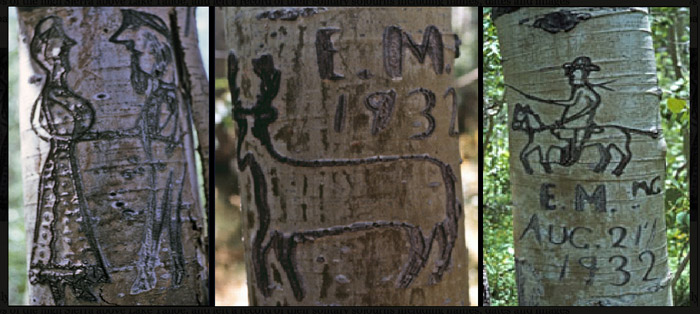Hole in the Clouds
Jan 31, 2010


This has been an El Nino winter in California, meaning that the Pacific breezes have functioned as a conveyor belt bringing storm after storm into the state. Sheets of cold rain blow through the coastal cities and into the Central Valley, where the storms bump up against the Sierra Nevada mountains, try to crawl up over them, and get stuck. A single storm can last four or five days in the Sierras and dump 50 or 60 inches of snow or more at higher elevations. This year, the Sierras are by far the snowiest part of the country.
The cabin in these pictures is near Mammoth, California, a ski area where all the snow is properly appreciated. The snow in the doorway represents one night's accumulation.
Here in Maine, we've had our share of snow, followed by a January thaw last week--tons of rain that left things looking almost springlike till the cold came back. And in Maryland, it's snowing even as I type. But I hear tell that soon it will be February.
winter
snow
Mammoth
Sierra Nevadas
California
Dec 17, 2012
 Not Kilroy, actually, but Ygarzabal, and Laxague and Goytia and Ibarriet. The writing on the trees is perfectly clear, if you can read Euskara, the Basque tongue: "Felix Arospide was here in 1897." "Josto Sarria, August 1962."
Not Kilroy, actually, but Ygarzabal, and Laxague and Goytia and Ibarriet. The writing on the trees is perfectly clear, if you can read Euskara, the Basque tongue: "Felix Arospide was here in 1897." "Josto Sarria, August 1962."
"Long live the sheepherders," proclaims a tree in Elko County, Nevada, "the ones who can take this place."
Wherever there have been sheep in the mountainous parts of the American West, there have been sheepherders from the Basque country of Europe. And for well over a century now, in the aspen groves at the edges of high country sheep meadows, names and dates and drawings and even poetry have been carved into the aspens, some of the text in Spanish, a little in French, but much in Euskara, a language long forbidden by government officials back home in France and Spain.
Gora Euskadi! read many of the inscriptions. "Long live the Basques."
But a more common carving is Biba ni! "Hooray for me."
And most common of all are sentiments along these lines: "Hooray for the whores of America. Long live the whores of Biscay as well!"
Most Basque shepherds in the United States were not shepherds back in Europe, and Basque people back in Europe did not carve pictures and smutty sayings into the bark of Basque trees. In America, however, the loneliness and tedium of life in the wilderness with sheep led resourceful people to innovate. For example, on a mountainside above Lake Tahoe, at the edge of a meadow with a multi-million-dollar view, a shepherd took his knife to a large aspen and inscribed: "I'm bored and we sheepherders lack a woman."
Aspen trees live no more than about eighty years, and the trees selected for carving were usually large and already mature. Old-style sheepherding ended in America around 1970, so most of the Basque carvings are dead or dying now, falling to the ground and rotting.
"I am not coming back here," says one sun-bleached log near a Montana lake. "Except to fish, maybe."
sheep
Nevada
Sierra Nevadas
Basque
Tahoe
shepherds
herders
aspen
arborglyph
West
carving


